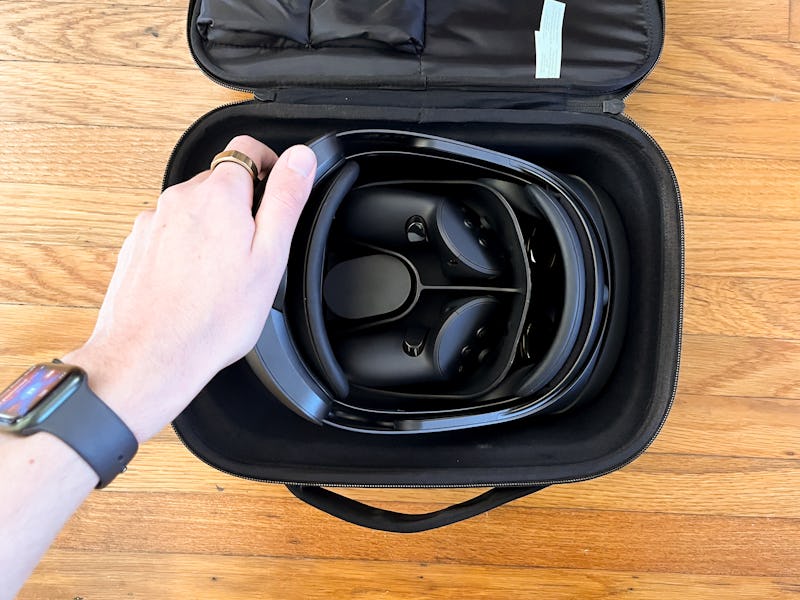The Quest Pro's most overlooked accessory is also its best
A lighter body and the ability to use a charging dock are only worthwhile on the go if you have a case.

One of the best parts of the Quest Pro is actually one of its accessories. The charging dock that charges the Quest Pro headset and the Touch Pro controllers are major factors in the device's put-on-and-take-off abilities. If your headset is always charging, you never have to worry about an empty battery when you’re ready to hop into VR.
The issue is, to appreciate all the benefits of your Quest Pro on the go, you’ve got to take the charging dock and its cables with you. That’s why the Quest Pro is best enjoyed with a carrying case, and luckily there’s already a pretty good option available — from Incase.
Incase Carrying Case for Quest Pro
Incase’s carrying case has a slot for every component of the Meta Quest Pro.
Meta is continuing the trend of curating some of the best VR accessories in its own store — that includes the new Incase Carrying Case for Quest Pro, a protective bag/carrying case that covers all of the bases.
From the outside, it looks either like a bowling ball bag or something you’d carry a handgun in, and Incase has taken care of everything: a storage pocket for the charging dock and charging cables in the lid, a fitted slot for the Quest Pro headset, controllers, and charging adapter on the bottom.
The top cover slots are reserved for the charging dock and cables.
The interior of the case has a faux-fur lining, and I’ve found it’s secure but spacious enough to fit in the Quest Pro with partial light blockers or full light blockers magnetically attached. There’s no room for anything outside of what you need to use the Quest Pro, but the whole case feels very premium in a way that’s appropriate for a $1,500 headset.
And Incase is charging a premium price to match. The Incase Carrying Case for Quest Pro costs $120, another added expense to go with an already expensive (albeit cutting-edge) VR system.
Should VR be portable in the first place?
The fact that one of the great new “conveniences” of the Quest Pro requires a case so you can comfortably take it with you kind of epitomizes the current awkward situation of mixed reality devices. Meta and other companies are interested in offering lightweight augmented reality glasses in the future, but the best they can currently offer is VR headsets that compromise on one feature or another (in the case of the Quest Pro, it seems like battery life).
I totally see why Meta imagines the Quest Pro as more of an office-bound device — it makes everything the Quest Pro can offer that much easier to achieve. VR works best in a controlled environment and on a full battery.
That way, while it’s a great option to protect your expensive new investment (or, better yet, your employer’s), the carrying case is also a kind of Band-Aid. Assuming technology and the price it costs to manufacture both trend in the right direction, Meta’s future Quest 3 or Quest Pro 2 won’t have to have snazzy carrying cases or charging docks — they’ll do what they need to with less hassle.
This article was originally published on